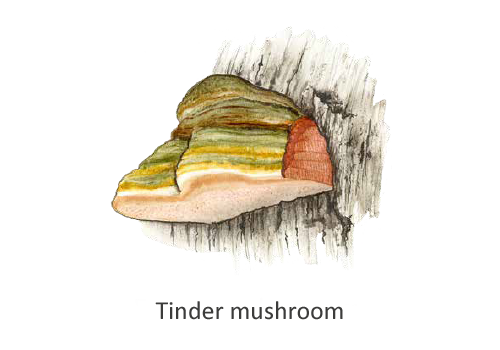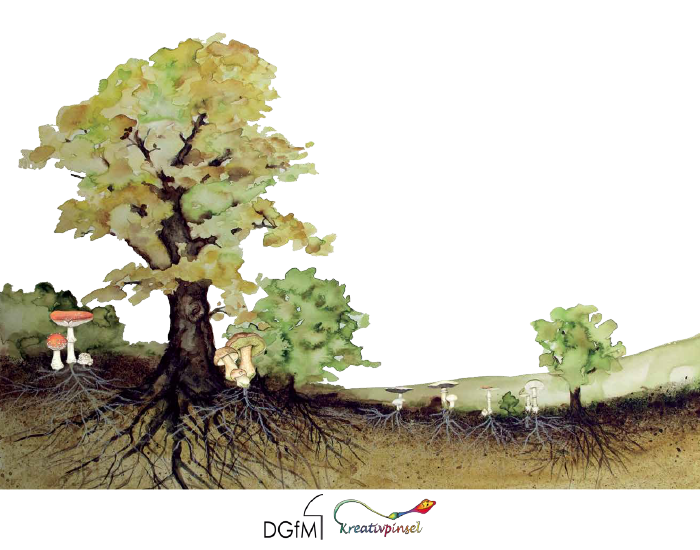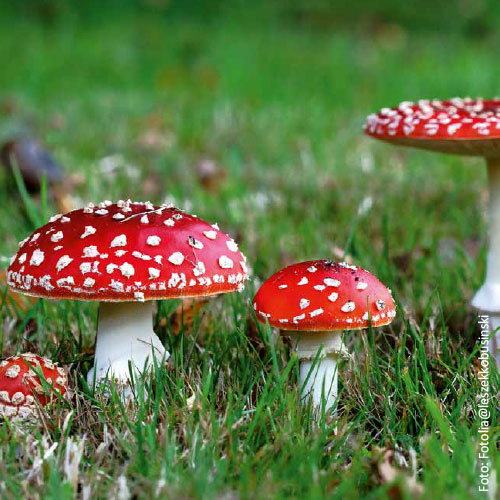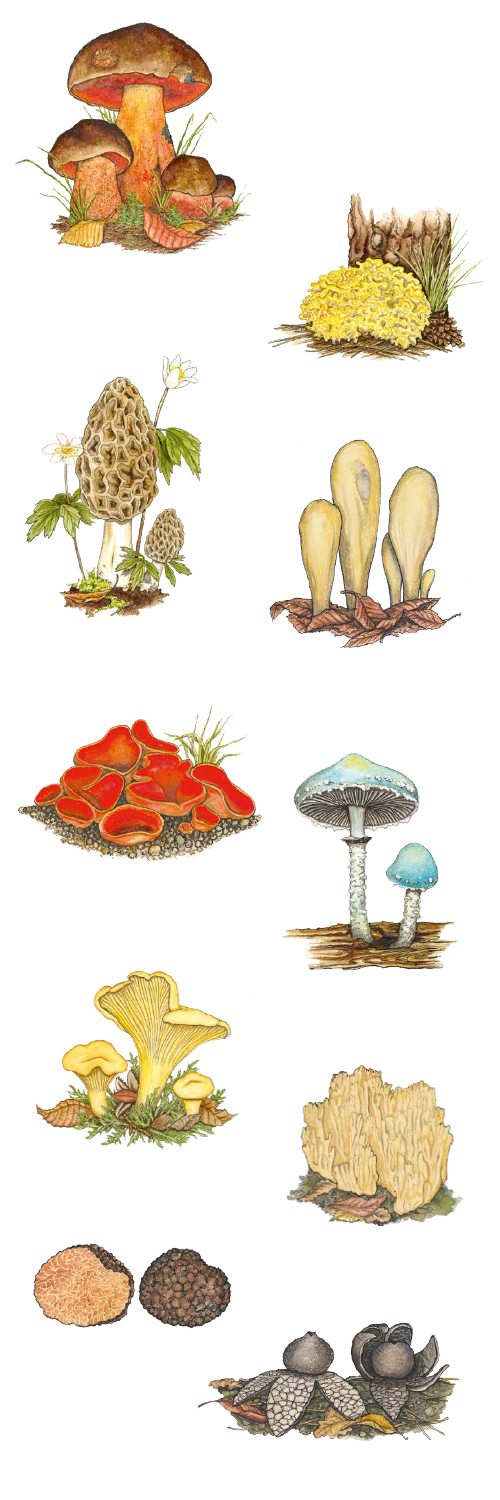Mushrooms are not plants. Their bodies are not divided into shoots, leaves, and roots, but rather, they consist of a network of the finest threads (hyphae), which is called a mycelium. It grows hidden under the ground and can spread over enormous areas. Since they have no green leaves (chlorophyll), they are not capable of photosynthesis. So, they can’t make their own „food“ (sugar, carbohydrates). Mushrooms feed on nutrients in their environment thus resembling animals. But they are not animals either, because the blueprint of their cells is different. For example, they have cell walls, while animals have cell membranes. They reproduce via spores, which are formed in large numbers in the fruiting bodies, what you know as the “mushroom”. Spores are extremely resistant to adverse environmental conditions and can last for a long time.
Saprobionts – the decomposers
Many mushrooms are decomposers (saprobionts). They play an essential role in decomposing dead, organic material; they degrade wood substances and all vegetable and animal waste.

Mushrooms as parasites
Some mushrooms are parasites. They penetrate the wood via injured bark in damaged or weakened trees and cause them to die.
Mycorrhiza – symbiosis between tree and mushroom
Many mushrooms, together with the fine roots of the forest trees, form a mushroom root, the so-called mycorrhiza. The fine underground threads of the mushroom cover the tree roots with a dense network of mycelium. This creates a large surface area through which the tree can absorb water and minerals much better. When the tree’s roots grow and are supplied with sugar produced from the leaves, the mushroom gets its share and also benefits. Such a partnership for mutual benefit is called symbiosis. In addition, trees can exchange messages with each other in the form of chemical messengers. In the soil, the mycorrhizal mushrooms create the connection between the roots of different trees. They form a whole network in the forest floor, the so-called „Wood Wide Web“.


Porcini, bay bolete, chanterelle – every child knows what a mushroom is. But, these are only the fruiting bodies that serve to spread the mushrooms spores. The actual mushroom consists of fine threads that grow as a woven-like mesh in rotten wood and under the forest floor. Among other things, mushrooms play an important role in the decomposition of dead material. Mold is a kind of mushroom that can cause disease, but it can also heal. The antibiotic penicillin was obtained from a mold mushroom.

Poisonous lucky charms. In the past, bowls filled with milk were placed in cattle stalls; in the milk were pieces of the Amanita muscaria toadstool, also commonly known as the fly agaric. Flies that sipped on the milk were numbed and then drowned.
The next station is waiting for you.


